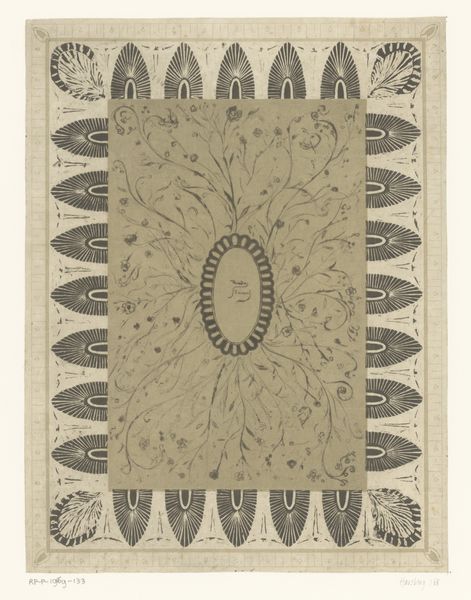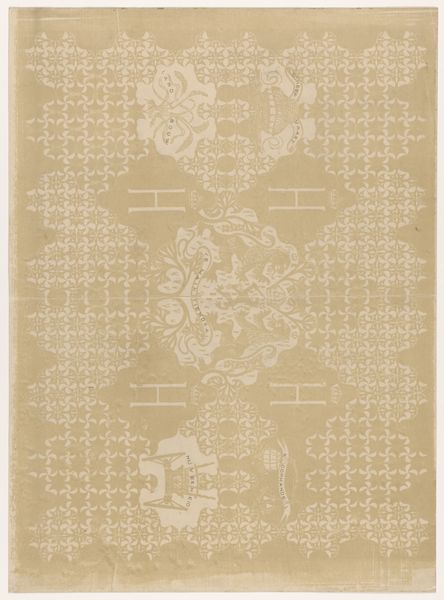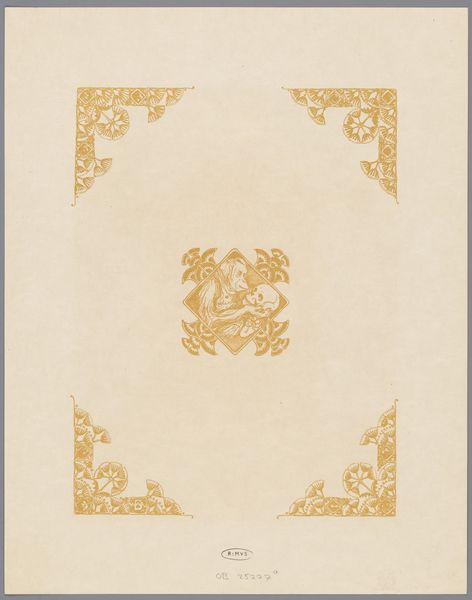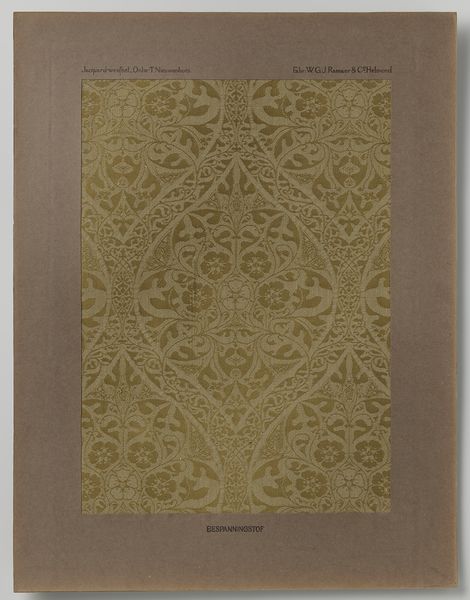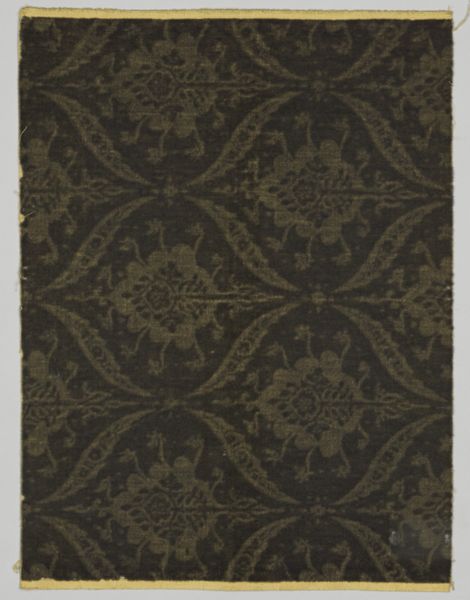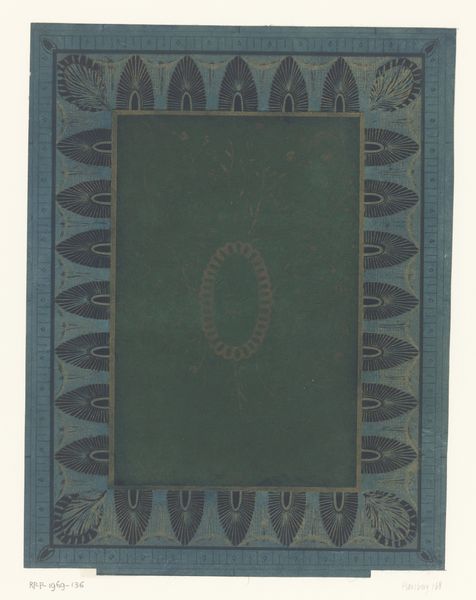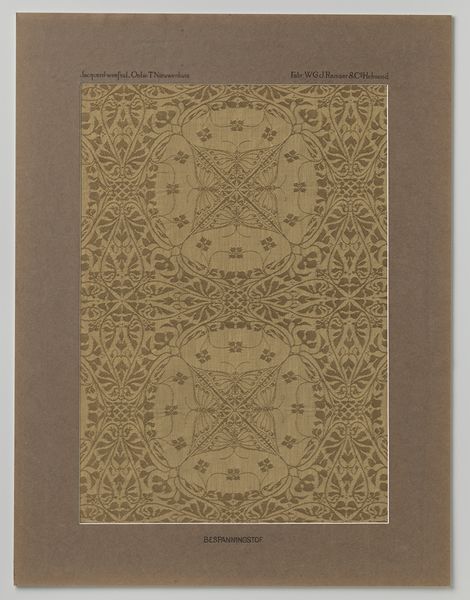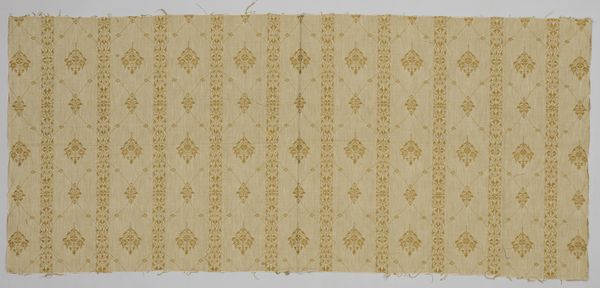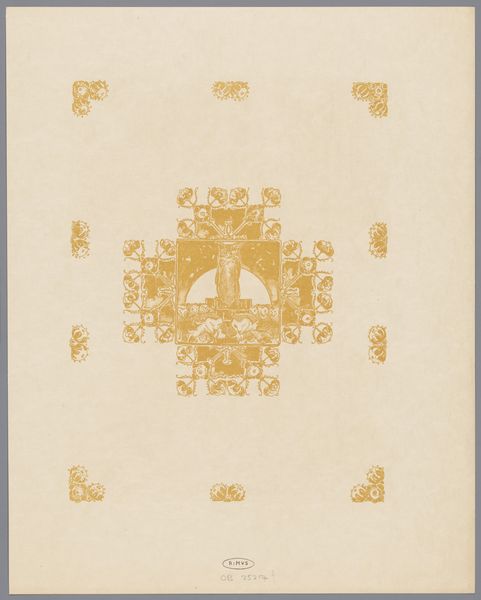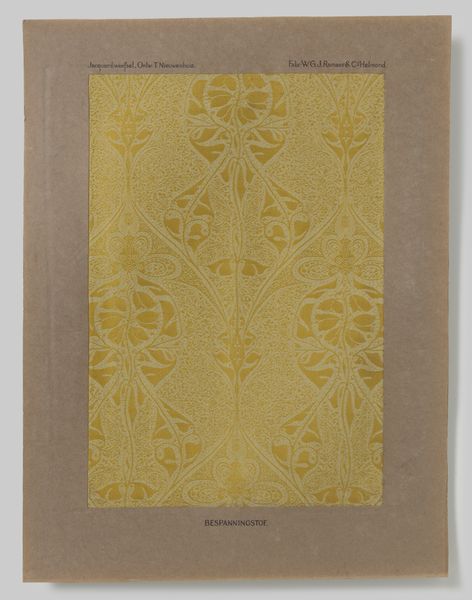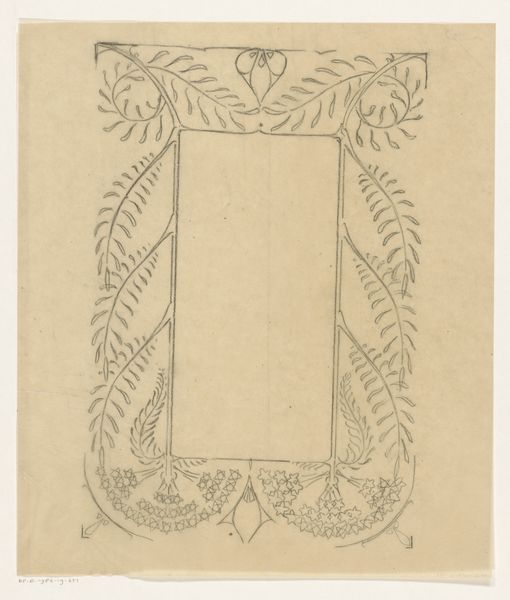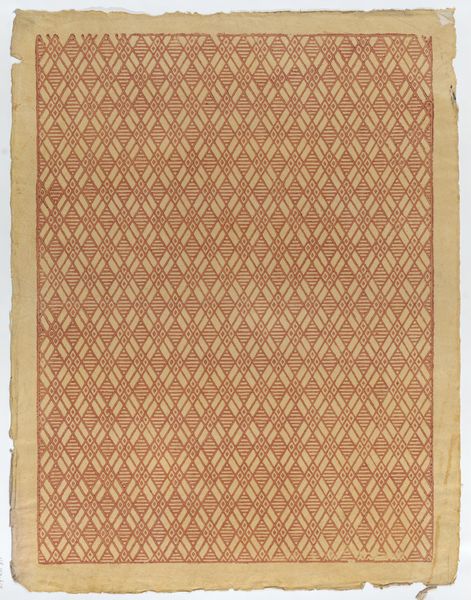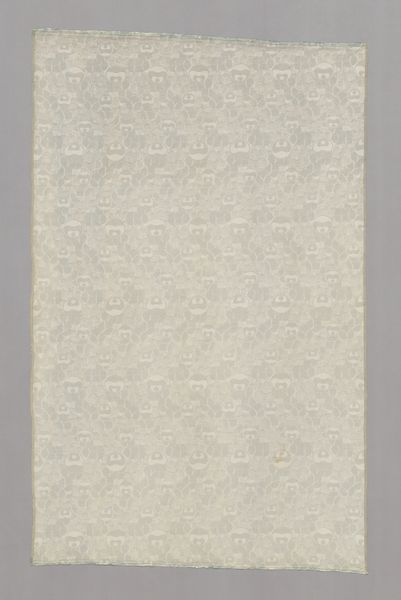
graphic-art, print
#
graphic-art
#
art-nouveau
# print
#
geometric
#
decorative-art
Dimensions: height 363 mm, width 276 mm
Copyright: Rijks Museum: Open Domain
Editor: Let's take a look at "Omlijsting met blad- en schelpvormige motieven," a print made by Theodore Roussel sometime between 1897 and 1899. The neutral palette and symmetrical composition give it a formal feel, but the organic, flowing motifs suggest something else. What’s your take on it? Curator: It's fascinating to see how Art Nouveau, ostensibly rebelling against industrialization, often ended up in highly structured, mass-producible forms. Consider how prints like this could democratize art, bringing decorative motifs into everyday life. Do you think this piece reinforces or challenges existing power structures? Editor: That’s a great question. The title suggests this was intended as a border for something else, almost like clip art. The average person may not be able to afford original paintings, but could personalize their space with prints and decorative objects, signaling good taste through consumerism. Curator: Exactly! This reveals art’s evolving function as a commodity. Works like this demonstrate how the art market grew to include more accessible items, blurring the lines between fine and decorative arts. The "high art" world often dismissed prints. Editor: So, something seemingly innocuous, like this border, speaks volumes about social class and the commercialization of art at the turn of the century? Curator: Precisely! The politics of imagery extend even to what we consider ‘background’ elements, prompting us to question the perceived value and social implications embedded within decorative arts. It is hard to ignore these class signifiers and its effect on art, its creation, and display. Editor: Wow, I will never look at decorative art the same way again. It makes me wonder what current design trends will tell future generations about us. Curator: An excellent point! By analyzing the social role and intention of images in artwork such as this, we equip ourselves to explore and discuss those dynamics in contemporary art too.
Comments
No comments
Be the first to comment and join the conversation on the ultimate creative platform.
